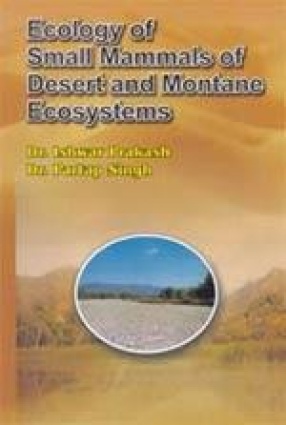

Most of the arid zones of the world have undergone vast ecological changes over the last five decades due to escalation of human population and alteration in landuse pattern. As a consequence of the human intervention in desert environments, their biodiversity is also changing. The earlier ecologists who have carried out researches on typical deserticolous elements are the pioneers. Prof. John Leonard Cloudsley-Thompson is one of those who initiated research on ...

Small mammals (Rodents and Insectivores) constitute 31.18% of total mammal species found in India. In spite of their abundance, this largest group among mammals has received little attention of ecologists. From the geomorphological standpoint Rajasthan offers multiple possibilities. The Aravallis diagonally bisect the state into western arid and eastrn semi-arid and mesic zones. The southern and southeastern parts of state have various rock systems. Present book ...
